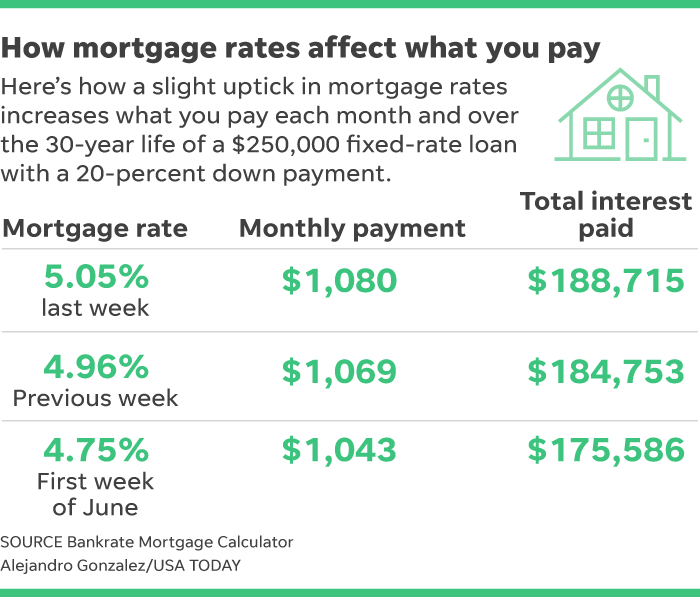The Ginnie Mae CUSIP aggregation program began in March 2019 and was completed in July 2019 and the Desk consolidated approximately 8,000 individual CUSIPs into about 8 aggregated ones. The aggregation process was developed to minimize administrative expenses and operational complexities connected with the Federal Reserve's firm MBS portfolio using an uncomplicated and rules-based technique that follows market.
operating goals and basic market practices. Other The New york city Fed publishes detailed data on all settled SOMA firm MBS holdings on its on a weekly basis. In addition, Fannie Mae, Freddie Mac, and Ginnie Mae supply details about aggregated CUSIPs, including the underlying firm MBS, on their public sites. Yes. Information about specific Fannie Mae, Freddie Mac, and Ginnie Mae company MBS CUSIPs underlying the Federal Reserve's aggregated CUSIPs will stay available on these companies' public sites.
's newly imposed restriction on repooling of reperforming forborne loans yet again punishes servicers acting as necessary company in the continuing efforts to protect debtors dealing with financial hardship due to COVID-19. Let me count some of the ways Ginnie Mae servicers are bearing the force of debtor forbearance under the CARES Act: no servicing cost earnings during forbearance of as much as a year( and possibly longer ought to Congress choose its essential); no relief from advance requirements for the duration of such forbearance; no revision of the structural impediments to personal financing to money advances; and no compensation for the expense of funds for advances. In releasing APM-20-07 on June 29, 2020, Ginnie Mae chose to further secure investors from the potential enhanced prepayment threat arising from early swimming pool buyouts of forborne loans. This defense, however, comes at the expenditure of servicers. By restricting servicers from counting on long-standing, genuine service activity early swimming pool buyouts coupled with the repooling of reperforming loans Ginnie Mae has actually chosen to consider a regular activity as unsuitable due to the fact that it is unnecessary and, gosh, might produce an earnings. This obligation lasts up until the defaulted loan is bought out.
loan secured by the mortgaged property, the proceeds of which are used to bring the loan present. By utilizing a junior lien, the loan does not require to be modified. Presently, a servicer might achieve a" stand alone partial claim" or a" home loan recovery advance" without buying the overdue loan from the pool, however servicers routinely integrate the permissible early buyout of a delinquent loan, a reinstatement through a" stand alone partial claim" or" home mortgage healing advance, "and a repooling of the reperforming loan into recently provided securities. Initially, the borrower under a reperforming loan must have made timely payments for the six months instantly preceding the month in which the associated mortgage-backed securities are released.
Second, the concern date of the mortgage-backed securities need to be at least 210 days from the last date the loan was delinquent." Reperforming Loans "are not limited to loans that are reinstated through a" stand alone partial claim" or "home loan recovery advance." The term is broadly defined to be a loan that is not more than thirty days delinquent, formerly was purchased out of a Ginnie Mae swimming pool, and has the same rate and terms as the originally pooled loans. The APM only hints at the reason behind Ginnie Mae's change in position, specifying that "Ginnie Mae looks for to guarantee that transactional activity associated with these alternatives does not impair market self-confidence in Ginnie Mae securities. "It highlights that FHA's "Stand Alone Partial Claim" and USDA's "Home mortgage Recovery Advance" do not need swimming pool repurchases unless what is a timeshare the terms of.
Which Banks Are Best For Poor Credit Mortgages - Truths
the loan require adjustment. Merely put, Ginnie Mae is denying servicers of an enduring, legitimate, optional business technique under the Ginnie Mae program obviously due to the fact that this discretionary activity is not required to allow a servicer to cease maintenance advances in respect of forbearance. Getting a benefit from repooling reperforming loans somehow is viewed as a dubious activity. In seclusion, insulating financiers in Ginnie Mae securities from boosted prepayment risk connecting to forbearance definitely is a worthy public law goal. When compared to the expenses, expenditures and lost earnings servicers are bearing in respect of forbearance, one has to wonder whether Ginnie Mae is relatively balancing the interests of servicers and financiers.
While Ginnie Mae may have the authority to modify the Mortgage-Backed Securities Guide from time to time, servicers have a right to reasonably rely on the standard construct of the program without product adverse modifications not grounded in law or abuse. Servicers develop, acquire and finance their Ginnie Mae MSRs based on this reasonable expectation. When you https://www.ktvn.com/story/43143561/wesley-financial-group-responds-to-legitimacy-accusations wish to have a good time in the sun right in.
your backyard, a swimming pool of your own may be paradise. A swimming pool comes with a significant rate tag, however, so be prepared to spend for it over time. While you have a couple of different choices, among the simplest is to fund a brand-new pool with a new home loan. Initially, contact the lending institution with which you have your existing home mortgage to ask about a new home loan.
Typically your current lending institution will aspire to maintain your financing, perhaps using appealing interest and terms. what is the best rate for mortgages. Keep in mind the terms used by your existing lender. Approach two or 3 other loan providers to inquire about a brand-new home mortgage. With a new lending institution, you will need to show evidence of identity and income, warranty deed and property owner's insurance. The new lender will investigate your credit and.
check the worth of your house throughout a prequalification procedure. After verifying your information and examining your creditworthiness, the loan provider might extend you prequalification status.
